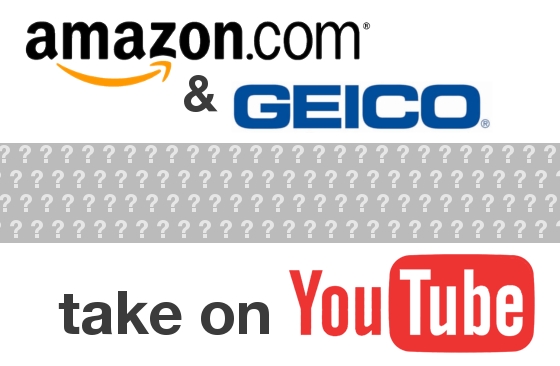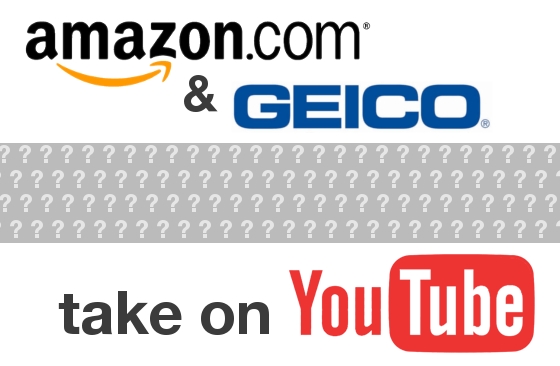

Sure, politics makes strange bedfellows: what about the wilderness of internet broadcasting? New partners Amazon and Geico test that maxim, taking on the internet's broadcasting giant, YouTube. And it may be just a taste of what's to come.
First reported by New Media Rockstars, Amazon, a company that seemingly takes on comers on all fronts, from online sales, publications, and portable devices, now has its sights set on the large swath of content offerings from internet broadcasting leader, YouTube. And it has enlisted a major advertiser, Geico, to make it happen. Today's YouTube is not the YouTube of the past. It has matured from the days of kitten videos, practical jokes and pirated content. YouTube now produces or supports a host of original content, garnering A-list talent and higher production values on its constellation of channels.
Growth and evolution provides a template for upstarts and an opportunity to poach talent. Amazon's streaming service, included in the yearly Amazon Prime membership, currently produces its own shows, rivaling the best such programs from YouTube and Netflix. But its strategic alliance with Geico could be the catalyst for a vast expansion of popular video content, much of it proven through former incarnations on YouTube. Until now, YouTube was able to set the terms without fear of content producers jumping ship to a rival outfit with more attrative agreements. However, the announced venture between Amazon and Geico could signal that those days are coming to a close.
The more things change...
Of course, such corporate partnerships between advertisers and distribution channels are nothing new, and in fact harkens back to the very early days of television. During television's Golden Age, it was commonplace for an advertisers name to be in the title of the program, and influencing content to a greater degree then what we experience today. Eventually, that model fell to the wayside, as television networks adopted the 'magazine' style advertising format, whereby there was a clear delineation between content and sponsor. The magazine format allowed television producers to assert some degree of creative independence. This freedom led to higher quality content, as the magazine format for advertising became the dominate template to the present.
Only time will tell if Amazon's partnership with Geico will lead to Geico-branded content, or if the resulting content will fall in-line with typical sponsorship behaviors. If I were to place a wager, I'd bet against a resurrection of the Geico Cavemen television show, or a Gecko Comedy Hour. But it's at least possible, given the popularity of Geico's ads and the entertainment value they pack into their 30 second spots.
The New Normal
While Amazon and Geico's pairing is definitely newsworthy, the revelation could be that this story indicative of a trend in media distribution. The above references to Geico-branded entertainment possibilities are meant to be tongue-in-cheek, but other advertisers are throwing caution to the wind and producing their own content. Chipotle, the fast food (or rather, casual) burrito chain, has partnered with Hulu to produce and distribute Farmed and Dangerous, a comedy satirizing corporate industrial agriculture, starring one of my favorite actors, Ray Wise. As relayed in this New Yorker article, there are a few passing references to Chipotle in the episodes, but the goal, other than entertainment, is to connect with Chipotle's potential customers who are concerned about agricultural sustainability, in an effort to play on themes shared by Chipotle and its patrons.
An even more overt effort to tie company and customer themes comes by way of the Guardian's recent agreement to produce content with Unilever. The venerable UK media company launched Guardian Labs with Unilever in a seven-figure deal for the expressed purpose to further the "shared values of sustainable living and open storytelling." While this union appears commendable on surface, it remains to be seen how much creative input Unilever will have, or the amount of entertainment value of the resulting content.
The three partnerships above could just be anamolous left-of-center attempts to either disrupt targeted markets, or to provide a rich, thematic connection between brand and consumer by leveraging the shared (or quantum) narrative of all involved. But, as Amazon's efforts illustrates, success yields emulation, and if any of these ventures prove fruitful, expect a spate of similarly 'unique' partnerships between advertisers and content distrbutors.
Tags: Studio & Broadcast


Comments